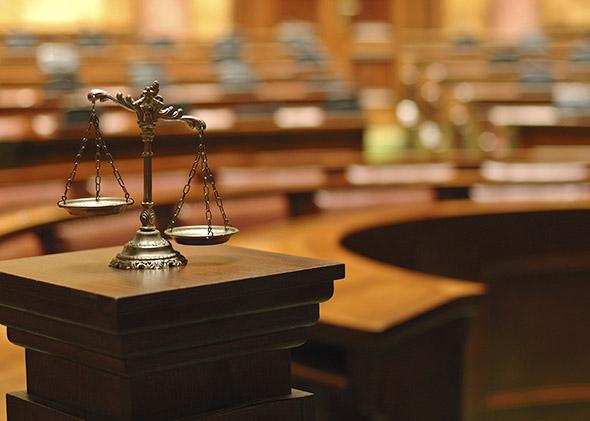This week, Jonathan Lippman, chief judge of the New York Court of Appeals, took bold action. During his State of the Judiciary speech, he addressed “the crisis emanating from deadly police-civilian encounters” and proposed legislation that would dramatically change the grand jury system in New York state.
Lippman’s proposed legislation addresses cases in which a police officer kills a civilian. During a grand jury investigation of such a killing, not only would a judge be present throughout the proceedings, but if the officer is exonerated, the judge would be empowered to release the entire grand jury transcript to the public. This would bring about two major changes to our present system: As it stands now, judges are never present during grand jury proceedings, and a grand jury transcript is virtually never available to the public. (The grand jury investigation into the police shooting of Michael Brown in Ferguson, Missouri, is an aberrant exception).
Our current process insures that prosecutors are in a “no-win” situation in these incendiary circumstances, as Lippman puts it. Prosecutors ask a grand jury to consider bringing charges against a police officer, but let’s face it, they have a close working relationship with the police. The result? If the officer under investigation is not indicted, the public is suspicious that the prosecutor subliminally (or not so subliminally) told the grand jury how to decide, or simply didn’t present the evidence as diligently as she might have in another circumstance. These suspicions are heightened when the police officer is white and the killed civilian is black.
Given the medieval nature of how the grand jury still operates (grand juries do, in fact, trace back to Henry II), Lippman’s proposal is not only fair, but it brings an antiquated system into the 21st century. Sadly, the public, press, and prosecutors have to figure out how to deal with a situation that has repeated itself all too often: A police officer kills a civilian; a decision is made to present evidence to a grand jury as to whether the police officer committed a crime; the grand jury votes a “no true bill,” meaning a “no indictment”; and—in the eyes of many—the police officer “gets away with murder.”
But does Lippman go far enough? It is true that the “no true bills” in the cases of Ferguson and the chokehold killing of Eric Garner in Staten Island—at least to large segments of society—seem to have resulted in dire injustices. But police killings are not the only circumstance in which our grand jury system is a problem—there are injustices every day resulting from secret, one-sided, grand jury presentations. Unless you yourself have been a grand juror, you might not know that a defendant can be indicted by a grand jury based on evidence presented solely by a prosecutor and, in some circumstances, without the defendant even knowing that a grand jury has been convened.
You might also not know that a grand jury’s vote of a “true bill” can cause a defendant to be held for trial on a felony—even though no defendant, no defense lawyer, and no judge has been present in the grand jury observing (much less participating in) the proceeding. What’s more, the prosecutor is not obliged to present the defendant’s side of the story except under extremely limited circumstances. Beyond that—in the federal system and in many states—no judge (not even the trial judge) will ever look at the transcript of the grand jury proceedings. Ever! And the defense counsel is entitled to only portions of the transcripts, and typically only after trial is under way—long after the grand jury decided to indict. Therefore, defendants—many of them innocent—are indicted and held for trial with no safeguard to determine whether the evidence was sufficient to indict, and no check on whether there were serious flaws in the presentation to the grand jury that may cost a defendant his freedom.
This is not to say that most prosecutors are looking to railroad the targets of their investigations, or that the grand jurors are acting in bad faith. But because prosecutors typically do seek to indict only defendants that they believe are actually guilty, they sometimes do so with blinders on and don’t look beyond supposed “facts” that would demonstrate guilt. As for the jurors, they simply don’t know better. They hear only one side of the story, presented by a prosecutor who is advocating for an indictment. They often—way too often—hear nothing of the other side, especially with no judge present to prompt their thinking.
Lippman proposes a great first step for reforming the grand jury system—but it’s only a start. Real reform will help ensure that there is not only sunlight on the wrongful vindication of police officers who are not indicted, but on all grand jury proceedings so that the innocent are not indicted wrongly.
